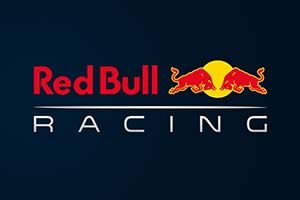There is no denying Max Verstappen’s brilliance as a Formula One racing driver. One of his most notable skills is his ability to maximise the performance of the Pirelli tyres fitted to his Red Bull.
 By Graham Duxbury
By Graham Duxbury
For instance, at the 2023 Spanish Grand Prix on the updated Barcelona circuit, a driver’s capacity to swiftly increase tyre temperature was essential to turning a fast lap in qualifying. Faster lap times are produced by the increased grip delivered by warmer tyres.
Max achieved optimal tyre temperature by applying heat-generating load to the tyres in a novel way. On his warm-up lap and during the opening sector of his crucial qualification lap, he took significantly longer lines around the corners. Pole position was his to take since his tyres were perfectly positioned within their operating window.
In the race, the situation was reversed. The high-speed nature of the track’s final two corners put additional strain on the left front tyre which became prone to overheating. Now there was a need to lower tyre temperature to maintain performance and ensure longevity.
Max seamlessly reverted to his normal “short corner” approach in race conditions and was able to extend his first stint on medium-compound tyres, which was one of the keys to his Spanish GP win.
Sergio Perez, on the other hand, appears not to have the level of sensitivity associated with his double world champion teammate and is increasingly seen by Red Bull as “Max’s number two”, probably as an unintended consequence.
This is not to say that Perez is a bad racer. His skill on street circuits such as Monaco, Singapore and Baku, where specific techniques and strategies are required, is readily apparent. His victory at the Azerbaijan GP earlier this year is evidence of this.
However, after the chequered flag at Baku, copies of the radio communication between Verstappen – who had finished second to Perez – and Red Bull Racing boss Christian Horner went viral.
In the transmission, Horner commiserated with Verstappen, highlighting the “lucky timing” of the Safety Car for Perez. This intervention, according to many fans on social media, had little bearing on the Mexican driver’s win.
Horner’s comments were interpreted by Sky TV reporter Ted Kravitz as an acknowledgement of Verstappen’s “number one” status within the team: “To my ears that sounds like Horner telling Verstappen ‘don’t worry Max, you’re still our man for the championship’,” said Kravitz.
Red Bull critics have slated Horner for not effectively managing the team’s internal dynamics and fostering a negative working environment that builds tension between its two drivers.
Could this be true? Horner has often stressed the team’s “fair and equal approach” to both drivers.
Perhaps surprisingly, history does not fully support Horner’s fair-and-equitable claim.
 Rewind ten years to the 2013 season when Sebastian Vettel and Mark Webber were Red Bull teammates. Tensions ran high, particularly after the “Multi-21” saga. This references a controversial incident that occurred during the Malaysian GP, where Vettel disobeyed team orders not to overtake Webber. He did and took the race win ahead of the disgruntled Australian driver.
Rewind ten years to the 2013 season when Sebastian Vettel and Mark Webber were Red Bull teammates. Tensions ran high, particularly after the “Multi-21” saga. This references a controversial incident that occurred during the Malaysian GP, where Vettel disobeyed team orders not to overtake Webber. He did and took the race win ahead of the disgruntled Australian driver.
This incident created a rift between Vettel and Webber and led to a breakdown in their relationship.
As Webber notes: “If I was unhappy with anyone, it was with Red Bull management. When the kitchen got hot, they didn’t handle it very well, and that’s what got to me.
“I felt there were constant attempts to devalue what I had done, even when I was winning races. The job’s hard enough without having bricks put in your backpack.”
Ultimately, both drivers left the team after the 2013 season, with Vettel joining Ferrari and Webber retiring from F1.
Some pundits suggest that the driver rifts at Red Bull have added spice to past seasons. Former world champion Jenson Button argues that intra-team driver rifts benefit the other drivers on the grid. “When you have teams fighting [internally] it is exciting. Instead of worrying about all the other guys on the grid, they are worrying about what their teammate is going to do. Hopefully, it does help [the other drivers],” he says.
Will current Red Bull issues on its driver front assist Hamilton, Leclerc, Alonso and others as 2023 draws to a close?
